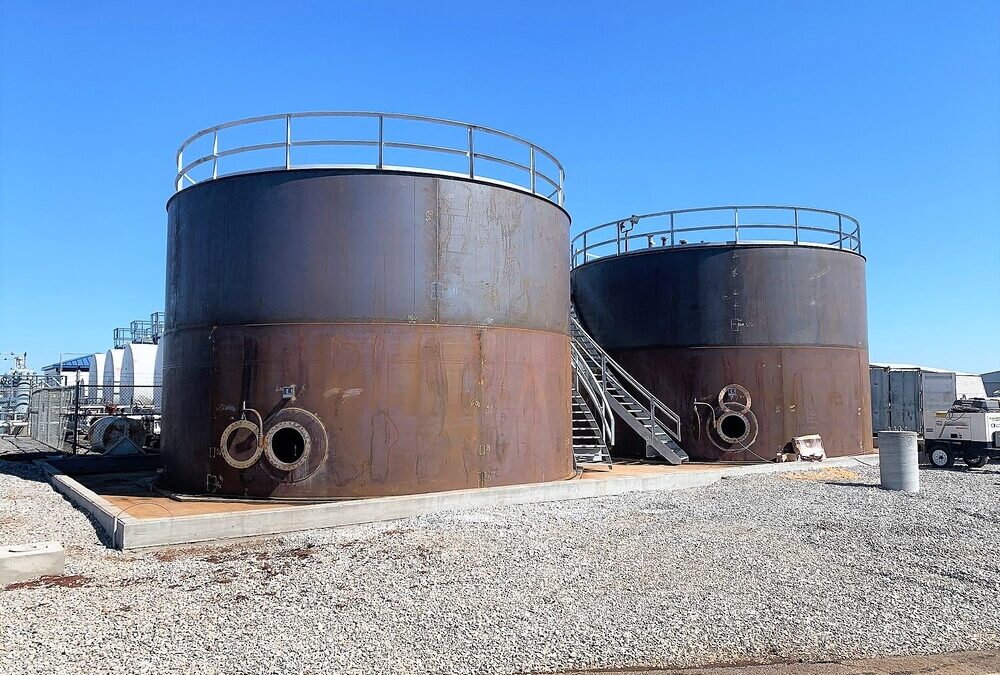Aboveground storage tanks are designed to hold a variety of liquid or gaseous substances in bulk quantities, many of which are harmful to people, facilities, and/or ecosystems. To ensure safety for all, multiple agencies have established regulations specific to the design, build, and operation of aboveground storage tanks.
Below, we’ll take a look at the most important aboveground storage tank regulations to understand.
Aboveground Storage Tank Regulations — An Overview
There are hundreds of regulations out there related to aboveground storage tanks, about anything from design and build to inspection and maintenance. Since these structures often store hazardous materials (and lots of them), various agencies have joined the discussion and implemented guidelines around their use.
Here’s a list of some of the most prominent organizations that have created their own set of aboveground storage tank regulations. You can click on each to jump to their description in this article.
- The United States Environmental Protection Agency (EPA)
- Local Governments
- Industry-Specific Agencies
Aboveground Storage Tank Regulations by the EPA
If your facility has aboveground storage tanks that hold an oil of any kind, it may be subject to the EPA’s Spill Prevention, Control, and Countermeasure (SPCC) regulation: 40 CFR Part 112. While this regulation doesn’t specifically mention the term “aboveground storage tank,” it includes that term under the broader category of bulk storage containers.
SPCC helps prevent a discharge of oil from running into navigable waters or shorelines. It also ensures that every aboveground storage tank facility has a comprehensive response plan that prepares them in case of a spill emergency.
Aboveground Storage Tank Regulations by Local Governments
Aside from regulations established by the federal government (EPA), your local government and authorizing agencies may also have their own set of standards to follow. These will likely match federal regulations to an extent, but also have some more standards specific to the area and environment in which your facility is located.
This way, if your local environment is at risk of any specific threats or challenges, you and the people around you can be assured that you’re aware of them and have prepared for them properly.
Aboveground Storage Tank Regulations by Industry-Specific Agencies
There are a few industry-specific agencies that have created their own aboveground storage tank regulations based on their experience and expertise.
American Petroleum Institute (API)
API standards are specific to aboveground storage tanks that hold oil. There are three that are most applicable:
- API 620: tanks under pressure that are field-erected or repaired
- API 650: new tank construction
- API 653: tank repairs
Wondering how API 620 and API 650 differ, and which may be best suited for your application? Read this blog.
American Society of Mechanical Engineers (ASME)
ASME’s standards regulate the design, fabrication, and repair of aboveground storage tanks. Most importantly, they look closely at shop-fabricated tanks to ensure manufacturing processes and protocols are on track with best practices. This helps to ensure high-quality results, long-lasting solutions, and safety for all involved.
National Fire Protection Association (NFPA)
The NFPA regulates any aboveground storage tanks holding flammable liquids. They require that tanks are manufactured in compliance with the following standards:
- UL 142: tanks that store non-corrosive, stable flammable and combustible liquids with a specific gravity no greater than 1.0.
- UL 2085: tanks that must meet additional, specific design requirements to ensure a two-hour fire resistance and a secondary containment solution.
How Do I Know Which Regulations Apply to My Facility?
After reading through those aboveground storage tank regulations, you might wonder if they all apply to your facility or not. There are a few ways to find out.
First, you could conduct your own research by reading articles online, buying standards books, etc. This might also include asking colleagues that may have a better understanding of technical regulations.
Or, possibly a better option is to talk to an aboveground storage tank manufacturer in your area. They’ll be up to date on all the regulations, and how they’d apply to your location and project. Then, they can help you complete the project by designing, building, and maintaining an aboveground storage tank solution ideal for your application.
For Guaranteed Quality & Compliance, Choose PALA.
To ensure the safety of your people, facility, and environment, you must comply with the aboveground storage tank regulations in this article. At PALA, we can help you design, fabricate, and install an aboveground storage tank solution that complies, then maintain it, so it stays that way. For more information, don’t hesitate to give our team a call or contact us online.

